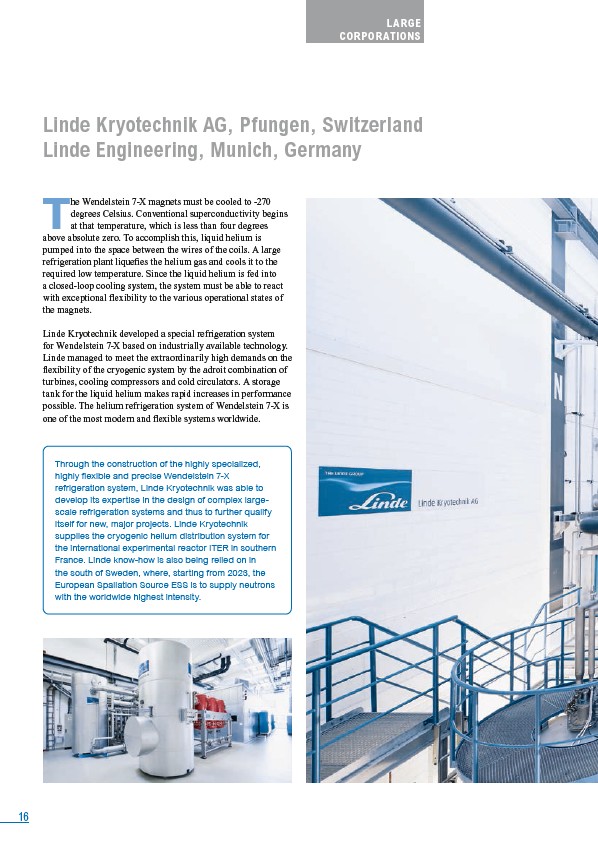
16
LARGE
CORPORATIONS
Linde Kryotechnik AG, Pfungen, Switzerland
Linde Engineering, Munich, Germany
The Wendelstein 7-X magnets must be cooled to -270
degrees Celsius. Conventional superconductivity begins
at that temperature, which is less than four degrees
above absolute zero. To accomplish this, liquid helium is
pumped into the space between the wires of the coils. A large
refrigeration plant liquefies the helium gas and cools it to the
required low temperature. Since the liquid helium is fed into
a closed-loop cooling system, the system must be able to react
with exceptional flexibility to the various operational states of
the magnets.
Linde Kryotechnik developed a special refrigeration system
for Wendelstein 7-X based on industrially available technology.
Linde managed to meet the extraordinarily high demands on the
flexibility of the cryogenic system by the adroit combination of
turbines, cooling compressors and cold circulators. A storage
tank for the liquid helium makes rapid increases in performance
possible. The helium refrigeration system of Wendelstein 7-X is
one of the most modern and flexible systems worldwide.
Through the construction of the highly specialized,
highly flexible and precise Wendelstein 7-X
refrigeration system, Linde Kryotechnik was able to
develop its expertise in the design of complex largescale
refrigeration systems and thus to further qualify
itself for new, major projects. Linde Kryotechnik
supplies the cryogenic helium distribution system for
the international experimental reactor ITER in southern
France. Linde know-how is also being relied on in
the south of Sweden, where, starting from 2023, the
European Spallation Source ESS is to supply neutrons
with the worldwide highest intensity.